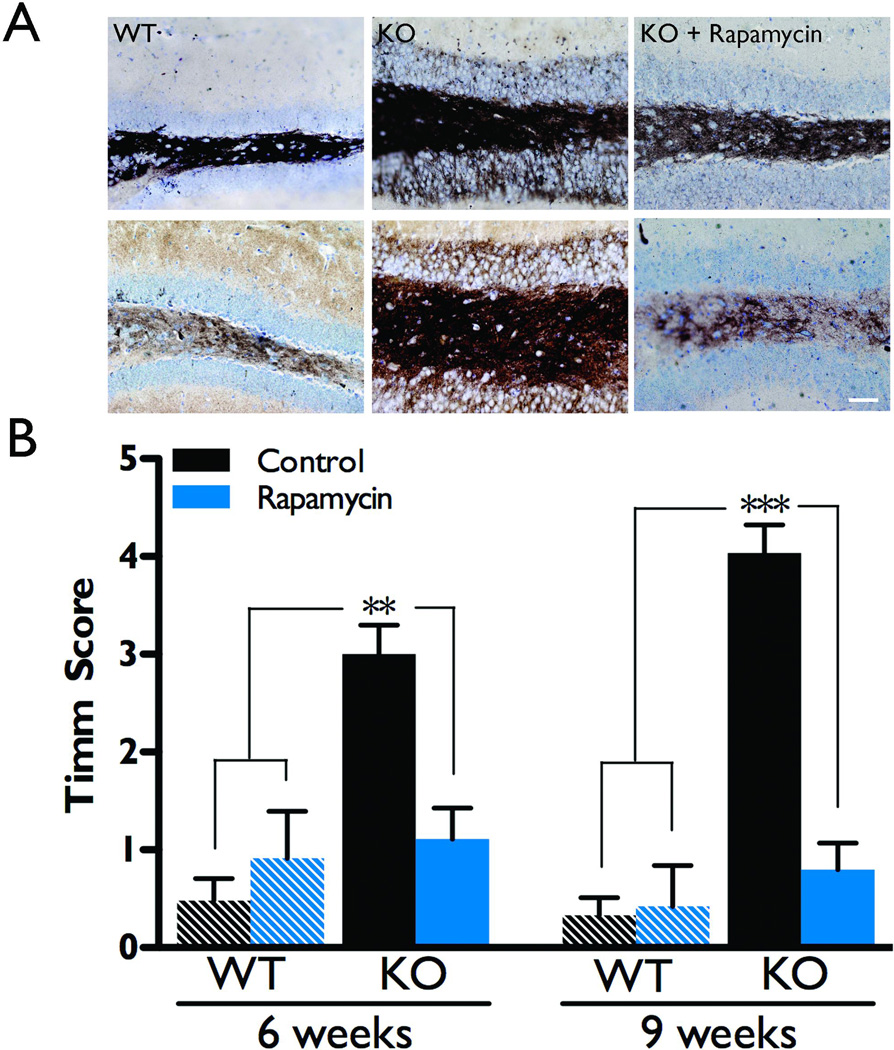Figure 2.
Rapamycin treatment suppresses aberrant mossy fiber sprouting. Wild type and knockout animals were treated with either vehicle or rapamycin during postnatal weeks 4–5 and then were sacrificed at 6 or 9 weeks of age to evaluate mossy fiber sprouting with Timm staining. Sections were scored by three independent investigators on a scale of 0–5, where zero indicates no abnormal staining outside of the hilus, and 5 indicates severely abnormal staining that penetrates through the granule cell layer and into the inner molecular layer. As there was no statistical difference between them, naïve and vehicle-treated groups were combined into one control group for each genotype and age. A) Representative examples of Timm stained sections at both 6 and 9 weeks of age reveal aberrant mossy fiber sprouting in control NS-Pten conditional knockouts as compared to wild types of the same age, which is dramatically decreased with rapamycin treatment (scale bar = 50µm). B) Summary data reveal that control knockouts had significantly elevated Timm scores compared to both control and rapamycin-treated wild type mice. Furthermore, knockouts treated with rapamycin exhibited significantly lower Timm scores than control knockouts and had Timm scores that were not significantly different from the wild type groups (n=4–9 per group). **p<0.01, ***p<0.001.

